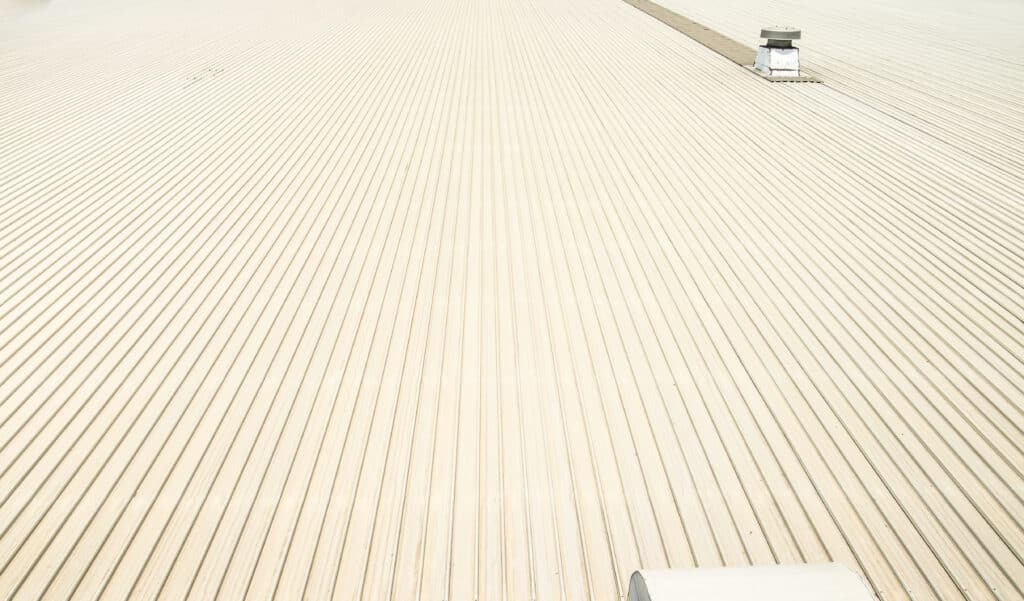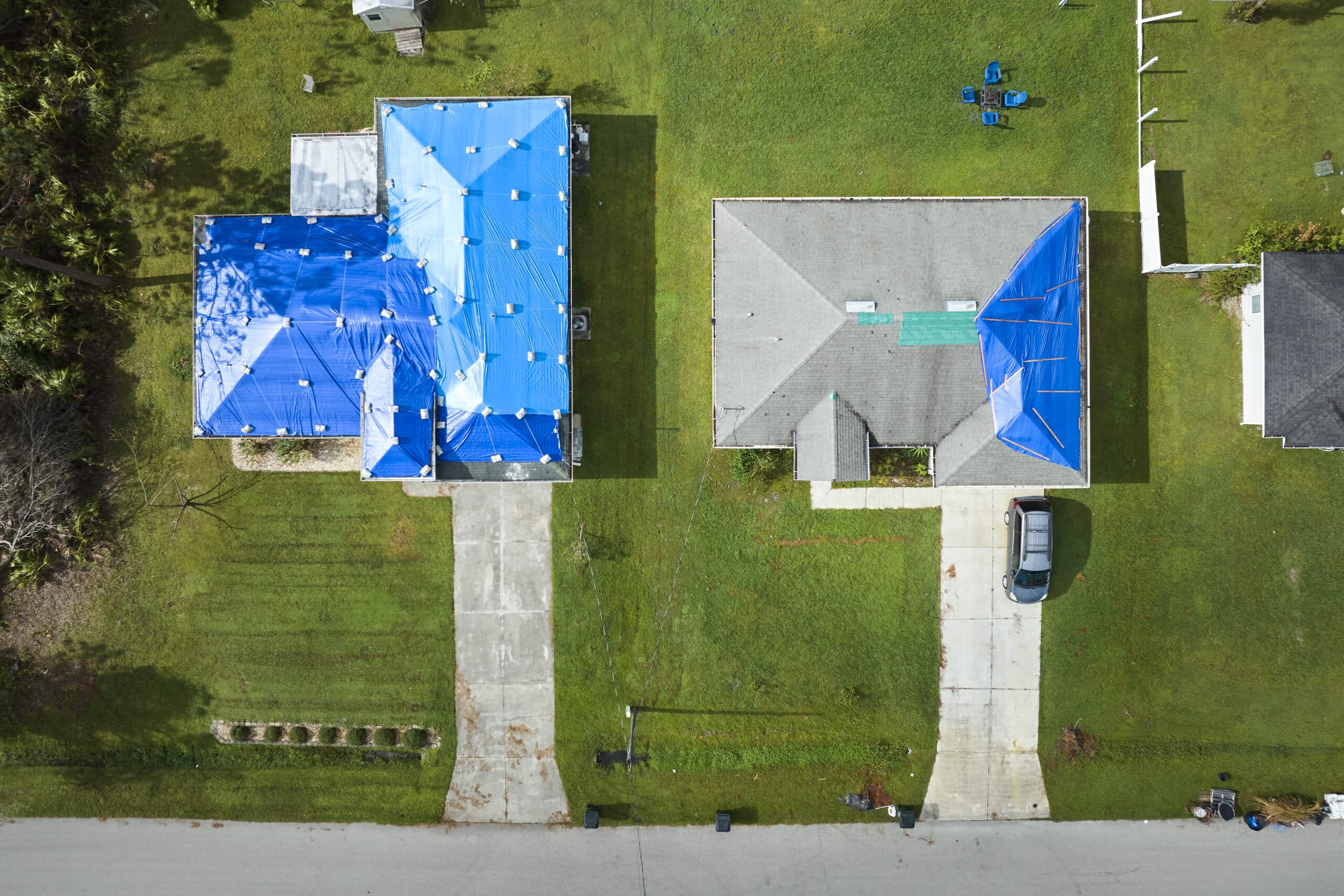As we step into the era of sustainability, anti-microbial roof coatings like SmartSeal are changing the game for us. These cutting-edge innovations provide superior roof protection and enhance the longevity of our roofing systems. Crafted with advanced technology like Microban’s MicroGuard, our roofs are now safe from the destructive clutches of microbial growth such as molds, mildews, and fungi.
Fostering anti-microbial roof coatings not only assures roof durability but also takes a leap towards a greener future. The protective layer stands guard against detrimental impacts, ensuring our roofing structures remain robust and aesthetically pleasing over time.
Rather than scrambling for quick-fix solutions, we are switching gears towards more durable, long-lasting roof coatings. Emphasizing roof protection, we are opening doors for a wave of sustainable building practices that will save us from frequent repair costs and give our roofs a longer life.
Key Takeaways
- Anti-microbial roof coatings provide superior roof protection and enhance longevity.
- Advancements like Microban’s MicroGuard protects roofs from harmful microbial growth.
- The use of anti-microbial roof coatings is a step towards environmentally friendly building practices.
- The long-lasting effects of these coatings save us from frequent maintenance and repairs.
- Embracing these technologies allows us to contribute to a sustainable future.
Understanding the Mold Risk for Flat and Low-Sloped Roofs
The design of flat and low-sloped roofs is inherently prone to issues like poor ventilation and moisture accumulation. This moist, stagnant environment presents an ideal setting for molds and mildews to grow and thrive. Consequently, effective roof maintenance for these types of structures often involves a constant struggle against these pervasive and damaging fungi.Consequences of Fungal Proliferation on Roofing Structures
Microbial proliferation on roof surfaces may not only tarnish their appearance but also pose a genuine threat to the structural integrity of the roof. A significantly infected roof often emits an unpleasant, musty odor, raising potential health concerns. Moreover, the need for frequent, intensive roof surface protection measures against this microbial onslaught may ironically contribute to a shorter lifespan for your roofing system and compound sustainability issues.
| Roof Type | Potential Microbial Risk | Commonly Used Material | Material’s Vulnerability |
|---|---|---|---|
| Flat or Low-Sloped Roofs | High due to poor ventilation and moisture accumulation | PVC Membranes | High susceptibility to microbial growth |
| Steep-Sloped Roofs | Low due to better air circulation | Asphalt Shingles, Metal Roofing | Lower vulnerability to microbes compared to PVC |
In conclusion, while we strive to ensure roof durability through effective roof maintenance and treatment strategies, understanding the susceptibility of roofing membranes to microbial growth is key in our guarding efforts. As we continue to grapple with these challenges, it becomes increasingly crucial to develop innovative roof surface protection methodologies that address these microorganism menaces effectively and sustainably.
Preventative Measures Against Microbial Damage in Roofing
The increasing recognition that prevention is key when it comes to fungal damage in the roofing industry shouldn’t surprise anyone. As the saying goes, a stitch in time saves nine. Naturally, this thinking extends to the domain of roof durability. A focus on preventative measures, such as roof waterproofing and anti-microbial roof treatment, significantly contributes towards the longevity of the roof while keeping maintenance demands to a manageable level.
Integrated Anti-Microbial Technologies in Roof Manufacturing
The application of anti-microbial technologies in the manufacture of roofing materials is an emerging trend. With the need for a strong defense against fungi, moss, and other microbial elements becoming more and more necessary, manufacturers have turned to integrate anti-microbial agents into the very fabric of materials during production.
This innovative leap marks a significant shift in the industry, from the traditional reactive approach to a new, more proactive one. Typical roofing materials gaining the benefits of this technology include flexible PVC. The anti-fungal agents are seamlessly incorporated into the PVC during manufacturing, ensuring that protection against fungal growth is inherent, not added.

Extending Roof Life with Built-In Fungal Resistance
The integrated anti-microbial technologies speak directly to the need for durability and longevity. Yet, their value extends beyond that. It’s not just longer-lasting roofs we are talking about. It also means reduced discoloration and unpleasant odors, a common byproduct of microbial infestation. In a broad sense, this treatment helps maintain the aesthetic appeal of rooftops.
From limiting environmental impact to extending the life expectancy of roofing components, the benefits these measures bring can’t be overstated. Moreover, the reduced need for recurrent cleaning or intensive roof maintenance saves time and costs for property owners.
In a world where sustainability and eco-friendliness are gaining precedence, the use of anti-microbial treatments in roof manufacturing is one step towards a more sustainable future. It gives us a blueprint for how we can elevate our roofing systems to the next level – resilient, durable, and more immune to microbial damage. Quite likely, this is just the beginning of an exciting new chapter in roof manufacturing and maintenance, and we’re eager to see where it leads us.
Rise of Sustainable Anti-Microbial Solutions in Roofing
In an era sailing towards global sustainability, the roofing industry has not been left behind. The focus has shifted to eco-friendly, sustainable roof coating solutions, specifically anti-microbial ones. This paradigm shift was triggered by the rising awareness and concerns over the harmful effects of traditional antifungal solutions.
Shifting Away from Traditional, Harmful Antifungals
Historically, roof coatings heavily relied on antifungal substances like OBPA (oxobismuthanetriyl tribenzoate), an arsenic-based chemical. Though notably effective in combating fungal growth, the environmental impact and health risks associated with OBPA soon overshadowed its benefits. The substance was not only detrimental to the environment but also posed a significant carcinogenic risk.

EU Regulations Prompting the Shift to Safer Alternatives
Recognizing these risks, EU regulations took a bold step banning OBPA use in 2016. This legal action further validated the urgently needed shift towards safer, sustainable roof coatings. The legislation prompted manufacturers to seek and develop greener alternatives. They strived to create solutions capable of providing effective roof protection without compromising environmental safety or user health.
As a result, innovative and sustainable roof coating solutions have emerged. Solutions that are not only compliant with EU regulations for roof coatings but also uphold the essence of eco-friendliness. The evolution represents a significant move towards safer, sustainable anti-microbial technologies in the construction sector, especially in roofing. These developments guarantee long-term roof protection without adverse environmental or health impacts, a true testament to progress in the industry.
Conclusion
As we reach the conclusion of our exploration into anti-microbial roof coatings, we find ourselves standing on the precipice of an industry revolution. We are at a pivotal moment where innovation is uniquely enhancing roof durability and sustainable roofing practices.
Enhancing Roof Durability and Sustainability Through Innovation
Embracing these advanced technologies, like that of MicroGuard, results in more than just extending the life of roofs. It propagates a cascade of benefits, chief among them being an invaluable contribution to environmental sustainability. Sustainability goes beyond just conservation – it also includes taking responsible steps to prolong the life of materials and reduce waste. This is what these cutting-edge anti-microbial roof coatings aim to achieve.
The Future Landscape of Anti-Microbial Roof Coating Solutions
As we look to the future of the roofing industry, we anticipate riding the wave of these technological advancements. We envision a landscape where material specifications rise to increased expectations – built-in protection, improved safety profiles, and adherence to stringent environmental standards.The future of roof coating solutions is one of resilience, durability, and a commitment to sustainability. Cutting-edge products like MicroGuard embody the significant step we are taking towards such a future. Let’s forge ahead on this journey, motivated by the quest for excellence, durability, and environmental responsibility.
SmartSeal leads the way for exceptional commercial roof coating in Eustis, FL. Reach out now to begin your project with us.
FAQs
What are anti-microbial roof coatings and how do they elevate roof protection and longevity?
Anti-microbial roof coatings are innovative roofing solutions that integrate technologies like Microban’s MicroGuard to guard against damaging microbial growth, like molds, mildews, and fungi. By preventing microbial damage, these coatings enhance the longevity of roofing systems while also providing superior roof protection.
How do flat and low-sloped roofs become susceptible to mold growth?
Flat and low-sloped roofs are especially prone to mold growth due to their design characteristics that often hinder proper ventilation and accumulate moisture. Materials like PVC membranes used in these roofs can harbor destructive microbial growth that results in structural and aesthetic damage over time.
How do anti-microbial technologies play a role in preventing microbial damage in roofing?
Preventative measures against microbial damage are incorporated during the manufacturing of roofing materials. Anti-microbial agents are added to materials like flexible PVC to provide durable protection against mold and mildew. As a result, these roof-coating solutions offer long-lasting defense, reducing cleaning frequency and extending the component’s lifespan.
What is MicroGuard and how does it contribute to the rise of sustainable anti-microbial solutions in roofing?
MicroGuard is an innovative product by Microban that offers globally compliant, environmentally responsible anti-microbial roof coatings. Integrated into roofing materials like PVC, EPDM, and TPO membranes, it prevents fungi proliferation and provides long-lasting protection.
How effective are anti-microbial roof coatings under real-world conditions?
Anti-microbial roof coatings, like MicroGuard, have demonstrated profound efficacy under real-world conditions. Using standardized test methods, PVC samples treated with these coatings showed no fungal growth, confirming their reliability in maintaining the cleanliness and integrity of roofing materials over time.
What are other suitable anti-microbial roof coating options for sensitive environments?
Clear-Shield Rx from Garland Roofing is a notable anti-microbial roof coating designed for sensitive environments. This non-toxic, water-based system mitigates the effects of microbial activity, offering protection to both the roof substrate and building occupants.
How do anti-microbial roof coatings fit into modern roofing systems?
Anti-Microbial roof coatings have revolutionized modern roofing systems by addressing several key challenges that traditional PVC roofing materials have faced, from combatting ponding water and UV ray damage to resisting shrinkage and thermal expansion. These treatments not only enhance roof durability but also improve aesthetic appeal and minimize maintenance needs.



